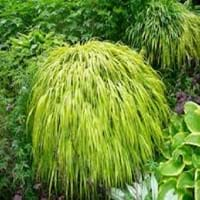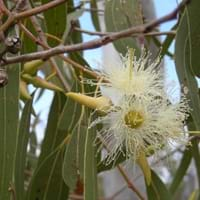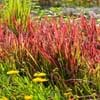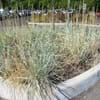Life Span
Perennial
Perennial
Types
Not Available
Eucalyptus absita, Eucalyptus acies, Eucalyptus calycogona
Number of Varieties
Not Available
Habitat
meadows, Riverbanks, Wet Woods
River side
USDA Hardiness Zone
5-9
9-10
Sunset Zone
1a, 1b, 2a, 2b, 3a, 3b, 4, 5, 6, 7, 8, 9, 10, 11, 12, 13, 14, 15, 16, 17, 18, 19, 20, 21, 22, 23, 24
5, 6, 8, 9, 10, 11, 12, 13, 14, 15, 16, 17, 18, 19, 20, 21, 22, 23, 24
Habit
Clump-Forming
Oval or Rounded
Flower Color
Blue Violet
Pink, Red, White
Flower Color Modifier
Bicolor
Not Available
Fruit Color
Purple
Yellow Brown
Leaf Color in Spring
Yellow, Green, Light Green
Dark Green
Leaf Color in Summer
Light Green
Gray Green
Leaf Color in Fall
Orange, Yellow green, Orange Red
Gray Green
Leaf Color in Winter
Green, Dark Green, Not Available
Gray Green
Plant Season
Spring, Summer, Fall
Winter
Sunlight
Full Sun, Partial Sun, Partial shade
Full Sun
Type of Soil
Loam
Well drained
The pH of Soil
Acidic, Neutral
Slightly Alkaline
Soil Drainage
Well drained
Well drained
Bloom Time
Late Summer, Early Fall, Fall
Early Summer, Spring
Tolerances
Dry soil, Shallow soil
Drought
Where to Plant?
Ground
Ground
How to Plant?
From Rhizomes
Stem Planting
Plant Maintenance
Medium
Medium
Watering Requirements
Keep ground moist
Requires regular watering, Requires watering in the growing season, Use and maintain water-efficient soaker hoses, Water Deeply, Water twice a day in the initial period
In Summer
Lots of watering
Lots of watering
In Spring
Consistently
Moderate
In Winter
Adequately
Average Water
Soil pH
Acidic, Neutral
Slightly Alkaline
Soil Type
Loam
Well drained
Soil Drainage Capacity
Well drained
Well drained
Sun Exposure
Full Sun, Partial Sun, Partial shade
Full Sun
Pruning
Prune grass to maintain level, Prune if you want to improve plant shape
Prune for shortening long shoots, Prune if you want to improve plant shape, Prune ocassionally, Remove dead or diseased plant parts
Fertilizers
organic fertlizers
All-Purpose Liquid Fertilizer
Pests and Diseases
Not Available
Canker, head rot, Mealybugs, Root rot
Plant Tolerance
Shade areas, Shallow soil, Wet Site
Drought
Flowers
Insignificant
Yes
Flower Petal Number
Single
Single
Fragrant Bark/Stem
No
Yes
Foliage Texture
Medium
Medium
Foliage Sheen
Matte
Matte
Attracts
Ants, Beetles, Caterpillar
Birds
Allergy
allergic conjunctivitis, Asthma, Rash
Itchiness, Pain and fatigue, Respiratory problems
Aesthetic Uses
Beautification, Ground Cover
Not Used For Aesthetic Purpose
Beauty Benefits
Not Available
Not Available
Environmental Uses
Provides ground cover, Shadow Tree
Air purification
Medicinal Uses
Acne, Aging, Laxative
Burns, Cough, Fever, Joint pain, Pulmonary tuberculosis, Upset stomach
Part of Plant Used
Leaves
Leaves
Other Uses
Can be made into a herbal tea, Showy Purposes
Oil is used as an industrial solvent, Oil is used in mosquito repellents, Used in paper industry
Used As Indoor Plant
Sometimes
No
Used As Outdoor Plant
Yes
Yes
Garden Design
Container, Edging, Mixed Border, Rock Garden / Wall, Water Gardens
Not Available
Botanical Name
HAKONECHLOA macra 'Aureola'
Eucalyptus
Common Name
Golden Japanese Forest Grass, Hakone Grass
Eucalyptus
In Hindi
जापानी वन घास
नीलगिरी
In German
Japanische gras
Eukalyptus
In French
Forêt herbe japonaise
Eucalyptus
In Spanish
forestales hierba japonesa
Eucalipto
In Greek
Ιαπωνικά γρασίδι δάσος
ευκάλυπτος
In Portuguese
floresta grama japonês
Eucalipto
In Polish
Japoński las lato
Eukaliptus
In Latin
Forest gramina Italica
Eucalyptus
Phylum
Angiosperms
Magnoliophyta
Class
Monocots
Magnoliopsida
Genus
Hachanechloa
Eucalyptus
Clade
Angiosperms
Not Available
Tribe
Not Available
Eucalypteae
Subfamily
Arundinariinae
Myrtoideae
Number of Species
Not Available
Season and Care of Japanese Forest Grass and Eucalyptus
Season and care of Japanese Forest Grass and Eucalyptus is important to know. While considering everything about Japanese Forest Grass and Eucalyptus Care, growing season is an essential factor. Japanese Forest Grass season is Spring, Summer and Fall and Eucalyptus season is Spring, Summer and Fall. The type of soil for Japanese Forest Grass is Loam and for Eucalyptus is Well drained while the PH of soil for Japanese Forest Grass is Acidic, Neutral and for Eucalyptus is Slightly Alkaline.
Japanese Forest Grass and Eucalyptus Physical Information
Japanese Forest Grass and Eucalyptus physical information is very important for comparison. Japanese Forest Grass height is 30.50 cm and width 30.50 cm whereas Eucalyptus height is 2.50 cm and width 32.81 cm. The color specification of Japanese Forest Grass and Eucalyptus are as follows:
Japanese Forest Grass flower color: Blue Violet
Japanese Forest Grass leaf color: Yellow, Green and Light Green
Eucalyptus flower color: Pink, Red and White
- Eucalyptus leaf color: Dark Green
Care of Japanese Forest Grass and Eucalyptus
Care of Japanese Forest Grass and Eucalyptus include pruning, fertilizers, watering etc. Japanese Forest Grass pruning is done Prune grass to maintain level and Prune if you want to improve plant shape and Eucalyptus pruning is done Prune for shortening long shoots, Prune if you want to improve plant shape, Prune ocassionally and Remove dead or diseased plant parts. In summer Japanese Forest Grass needs Lots of watering and in winter, it needs Adequately. Whereas, in summer Eucalyptus needs Lots of watering and in winter, it needs Average Water.





